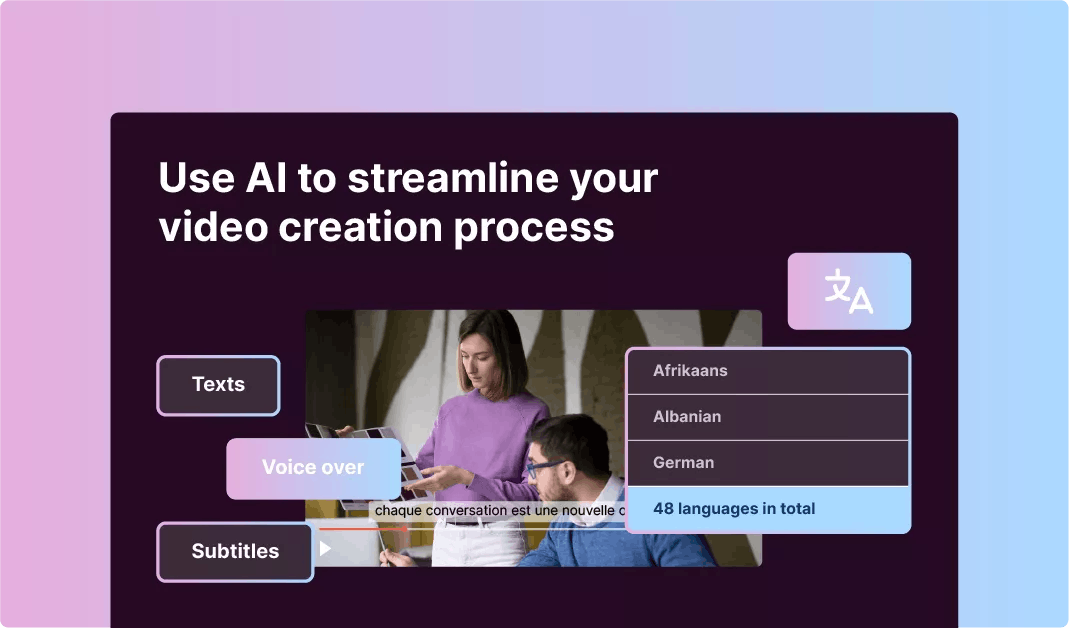When To Include Video In Internal Communication?

Companies have generally started to create videos for their marketing communication before using them for internal communication. Compared to traditional internal Intranets and emails, video is a much more effective way to engage employees. Video is the essentialtool for any company that aims to improve communication within its departments.
The use of video for internal communications is recommendable for several reasons:
- video can be used to convey a simplified and attractive message for anyone’s mind;
- the format emphasises the human dimension;
- the tool is collaborative;
- video content production has become a faster and simpler technology, and can now be used for types of communication that require a high degree of responsiveness;
- the content is always available;
- video provides the best recall rate among all media combined.
When to include video in internal communications strategies. Below is a list of several contexts in which video is highly recommended in many countries now.
Videos for the arrival of new employees
The onboarding process is an essential part of the employer brand. It’s also a time that’s decisive for new employees when considering whether or not they can grow within the organisation. To free managers from providing general explanations, video can be used to create a kind of video FAQ for new employees who will then have plenty of time to ask their managers more specific questions.
This kind of video will also ensure consistency in the quality of information. The onboarding experience will be the same for every new employee in terms of corporate information. Finally, each video produced reflects the corporate culture, making it easy to absorb by newcomers to the organisation. Below are some examples of videos that can be used for the arrival of new employees:
- welcome video from the director;
- presentation of the company, its culture and the values appreciated by customers;
- explanatory video on the essential processes of company life.
Video providing corporate information
Video used for internal communication enhances your teams’ sense of belonging and engagement. Video is also a means to share a quality message with the greatest number of people possible at different times.
Another advantage of corporate videos is the ability to analyse how it’s received: What are the most popular formats? Is the video watched till the end? Who doesn’t watch it? Why?
Only video makes it possible to analyse the reach of messages with specific indicators.
- Video also helps reduce the confusion that can arise from changes in the company, by visually showing how the company will be affected or impacted. Below are the recommended uses of video for corporate communication:
- informative video on company news
- (change of direction of the organisation, philosophy, objectives, etc.);
- employee testimonials;
- assessment, motivation and thank-you videos; videos to celebrate highlights.
Video for improving information management and communication among departments
Video helps to break down communication silos. It’s a medium that each department can use to communicate with other departments or with the entire company. And it’s ideal for spreading information on a topic.
Some examples of this type of video are:
- employee interviews about their jobs;
- videos for spreading R&D information within the company;
- assessment videos; videos for presenting company goals.
Conclusion
Communications managers are now effectively managing information and breaking down information silos. This means giving a voice to a growing number of people inside the company, beyond the traditional employer brand or social selling frameworks.
Today, each department has communication needs that are specific to its goals, resulting in a profound change in the role of communicators.
As a result, communications managers increasingly serve as a medium, like chief content editors, meeting the effective communication goals of each department, giving them credibility.
They need to be role models in terms of communication and use the most advanced solutions to improve the way they convey each message. But they should also provide guidelines and advise the different departments on how to produce content. So the role of communications managers is not only to provide internal content.
They also need to promote ways of communicating, both in terms of tools and content, and train each employee in the high-quality production of information.
Resources













